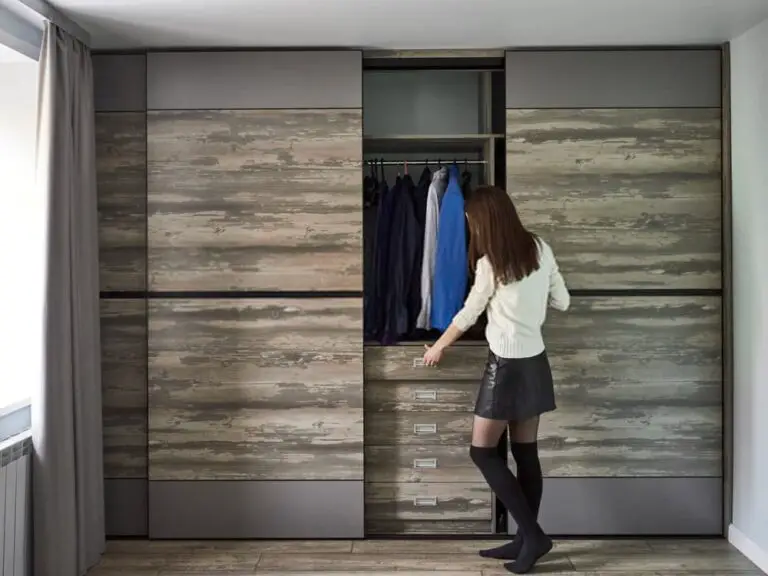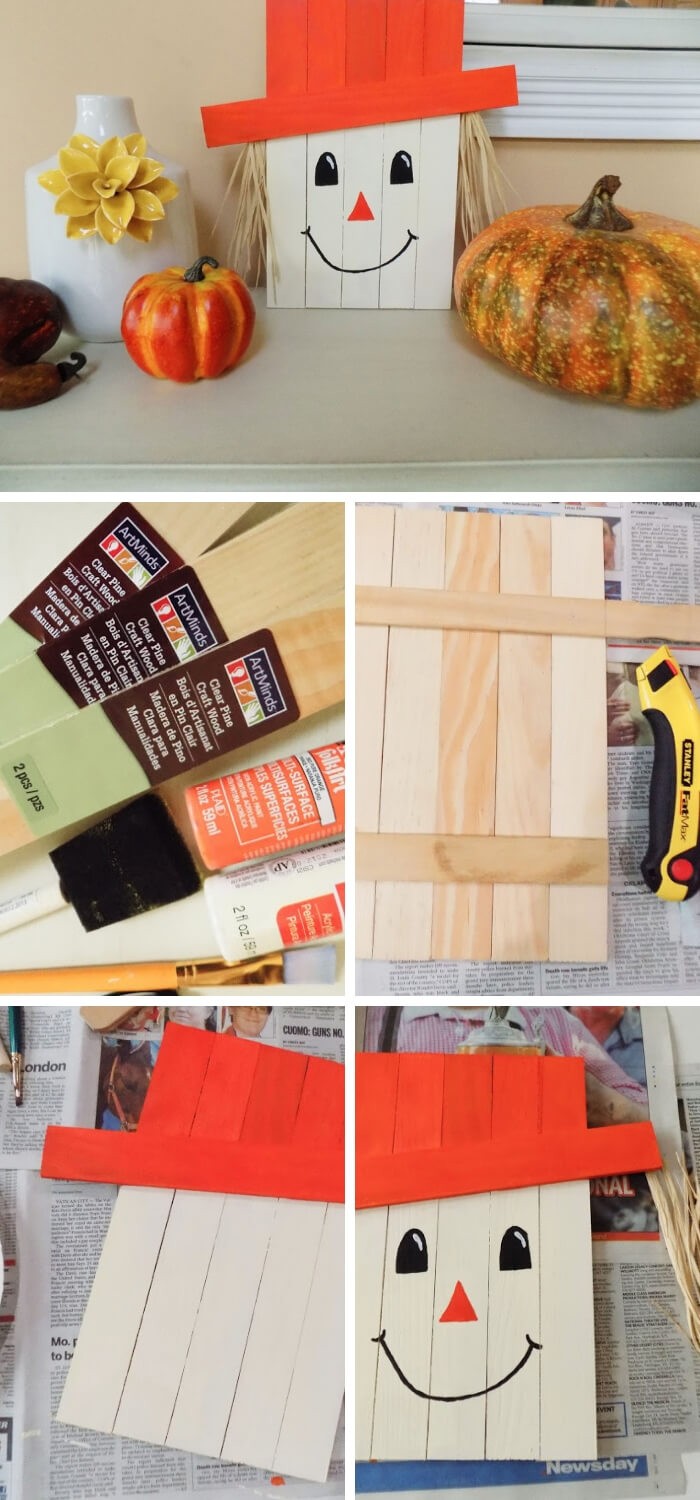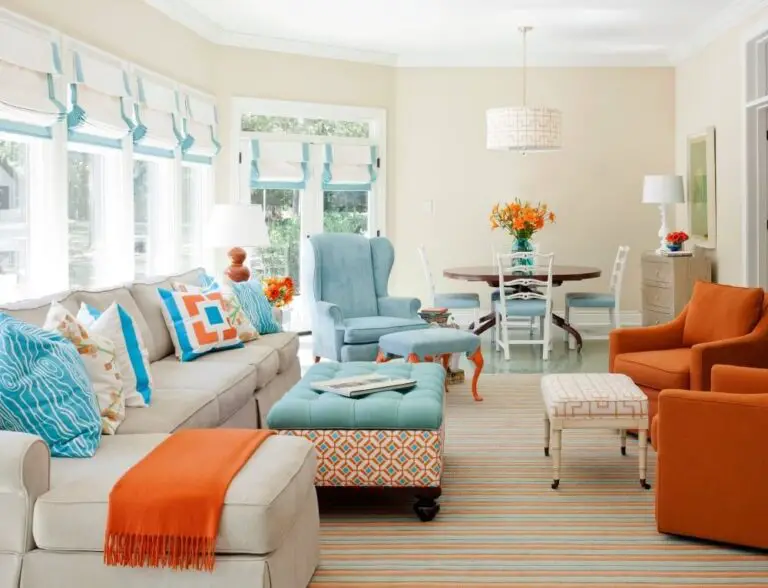40+ Different Types Of Jade Plants (Crassula Ovata) With Pictures
Jade plants, also known as succulents, are a popular choice among houseplant enthusiasts. They not only add a touch of beauty to any room but also symbolize good fortune and luck. One of the reasons they’re so well-liked is that they’re relatively low-maintenance, requiring only occasional watering and some sunlight to thrive. As you search for the perfect addition to your home, you may be wondering what types of jade plants are out there.
With over 30 varieties to choose from, it’s no wonder that deciding which one to bring into your life can be a daunting task. From the Crassula Arborescens, also known as the Silver Jade Plant, to the Portulacaria Afra Variegata, each type has its unique characteristics and charm. In this article, we’ll delve into the different types of jade plants that are available, giving you a comprehensive guide to help you make an informed decision about which one is right for you.
How many types of jade plants are there?
Jade plants, native to South Africa, boast an astonishing diversity with over 200 distinct species spread across the globe. One of their most distinctive features is their vibrant jade green hue, which is reflected in the shapes of their leaves. These leaves can take on a range of forms, including tear-drop, oval, and wedge-like profiles, adding to the plant’s unique charm.
Jade plant symbolism
In Chinese culture, jade plants are deeply rooted in symbolism, with one of the most prominent meanings being good fortune. This ‘lucky plant’ is often gifted to friends moving into new homes or newlyweds, signifying prosperity and friendship. Its significance extends beyond special occasions like weddings and housewarmings, also serving as a thoughtful present for birthday celebrations and even souvenirs for visitors.
While it may carry a higher price tag, the jade plant’s ornamental value is undeniably superb, making it a worthwhile investment.
Jade plant identification
When it comes to distinguishing a jade plant from other succulent species at a glance, having some key characteristics in mind can make all the difference. One of the most significant factors is understanding what sets these plants apart from their succulent counterparts.
Stem
The unique, tree-like shape of this plant is primarily attributed to the robustness of its stems. These stems can grow up to 4 inches in diameter, exhibiting a remarkable similarity to the thick, fleshy texture often found in succulent species.
Leaves
The distinctive leaves of this plant are characterized by their tear-drop shape. With the possibility of being either glossy or waxy in appearance, they can grow up to three inches in length, with some varieties displaying an ovate or wedge-like form.
Flowers
While jade plants are not typically known for their floral displays, they do have the ability to bloom under specific conditions. One of these circumstances is a dry spell, such as those experienced during summer or winter months. The timing and frequency of flowering also depend on factors like climate and sunlight exposure. In ideal conditions, jade plants can produce delicate, star-shaped flowers with a subtle pinkish-white hue.
Types of jade plants
With the previous information laid out, it’s no surprise that the excitement surrounding jade plants only continues to grow. Let’s delve into some of the most well-known and sought-after varieties of this beloved succulent.
Crassula Arborescens (Silver Jade Plant)
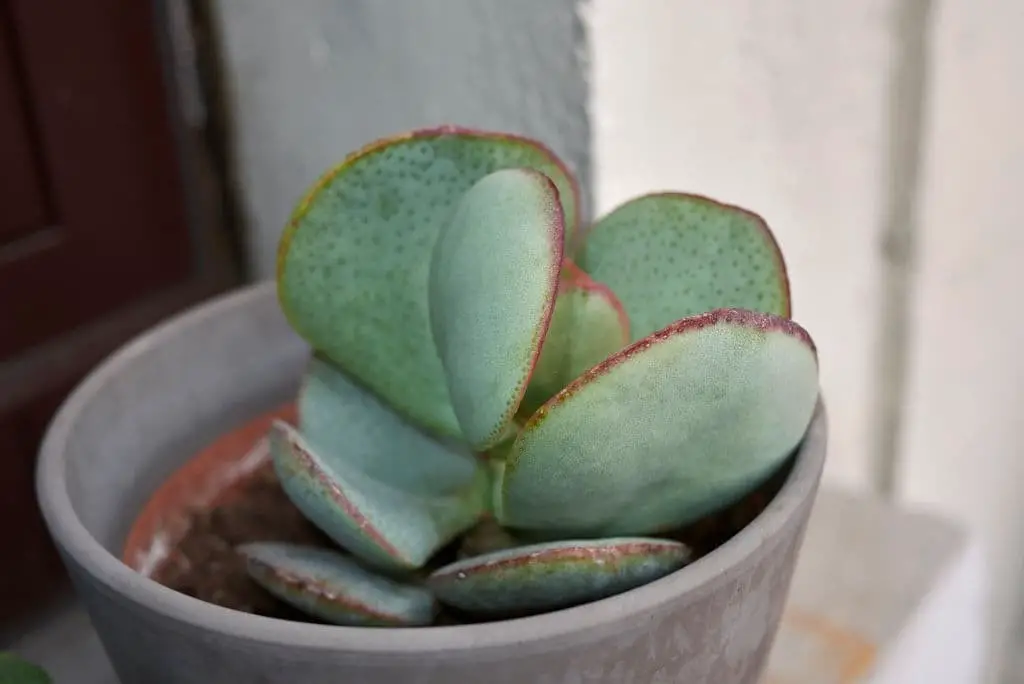
The Jade Plant, also referred to as the Silver Dollar Plant or Money Plant, is renowned for its supposed ability to attract good fortune into one’s home. Its most distinctive feature is the striking resemblance of its grayish-silver leaves to dollar coins. While it thrives in outdoor environments, it can also be successfully cultivated indoors. This adaptable and low-maintenance plant is an excellent choice for those seeking to bring a touch of luck and serenity into their living spaces.
Crassula Arborescens Blue Bird Variegata
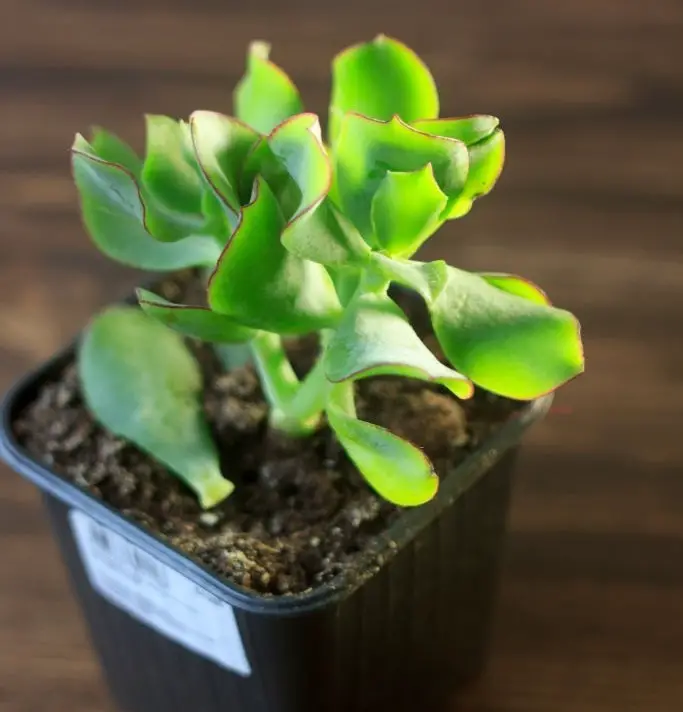
The Blue Bird money plant, also referred to as Jade Plant, is characterized by its slow growth rate compared to other types of jade plants. A key identifier for this variety is its unique leaf coloration, which combines shades of aqua blue, cream, green, and red hues. Its compact size makes it an ideal choice for container planting.
Crassula Arborescens Undulatifolia (Ripple Jade)
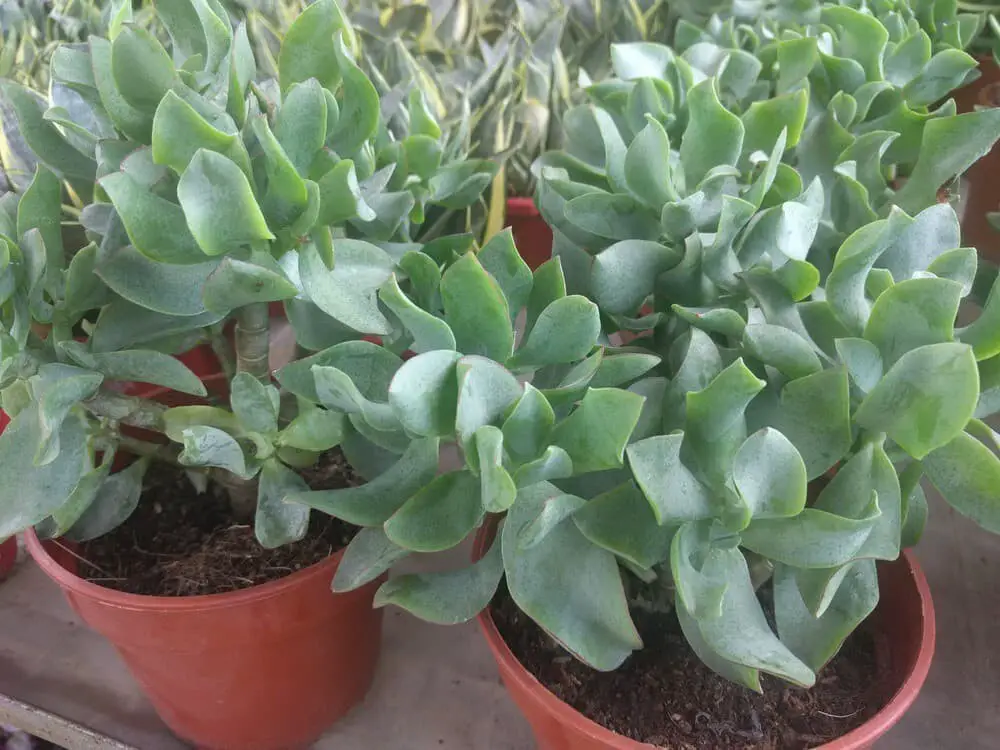
The Ripple Jade, a popular variant of the jade plant, is characterized by its modest growth rate and compact stature. Reaching a maximum height of around 3 feet, it’s often likened to a bonsai tree in terms of its natural size, rather than being a result of intentional pruning.
Crassula Capitella Campfire
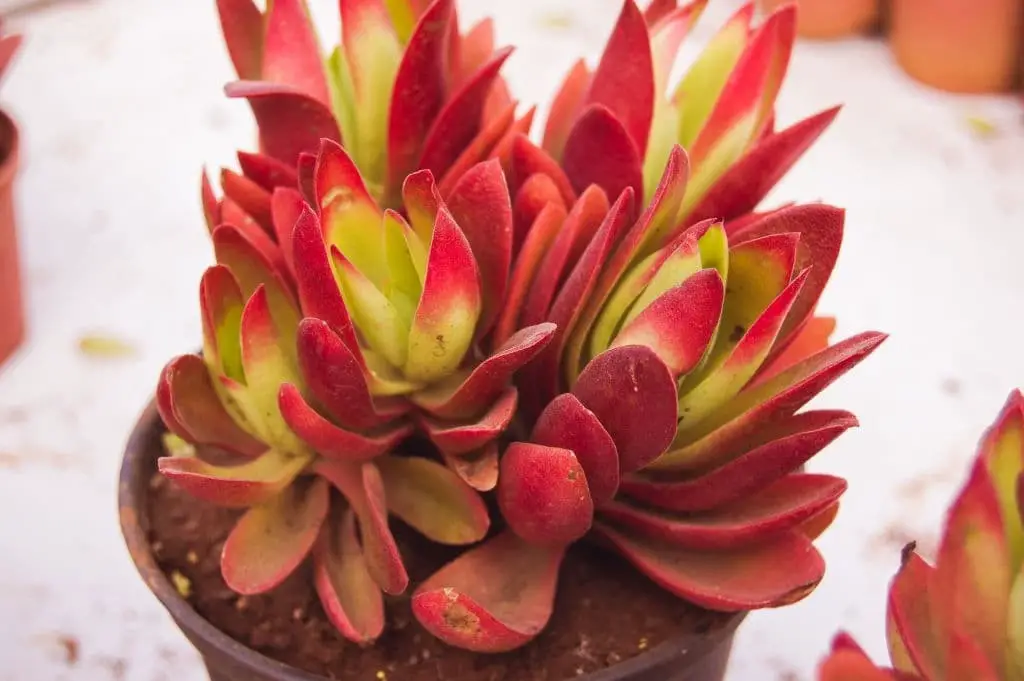
The most distinctive feature of this specific jade plant variety is its unique foliage, which bears a striking resemblance to an airplane propeller. Notably, this type of jade plant presents itself in two distinct colorways: a vibrant red hue and the more common light green tone. Additionally, during the summer months, it produces small, white flowers that add a touch of elegance to its overall appearance.
Crassula Coccinea (Red Jade Plant)
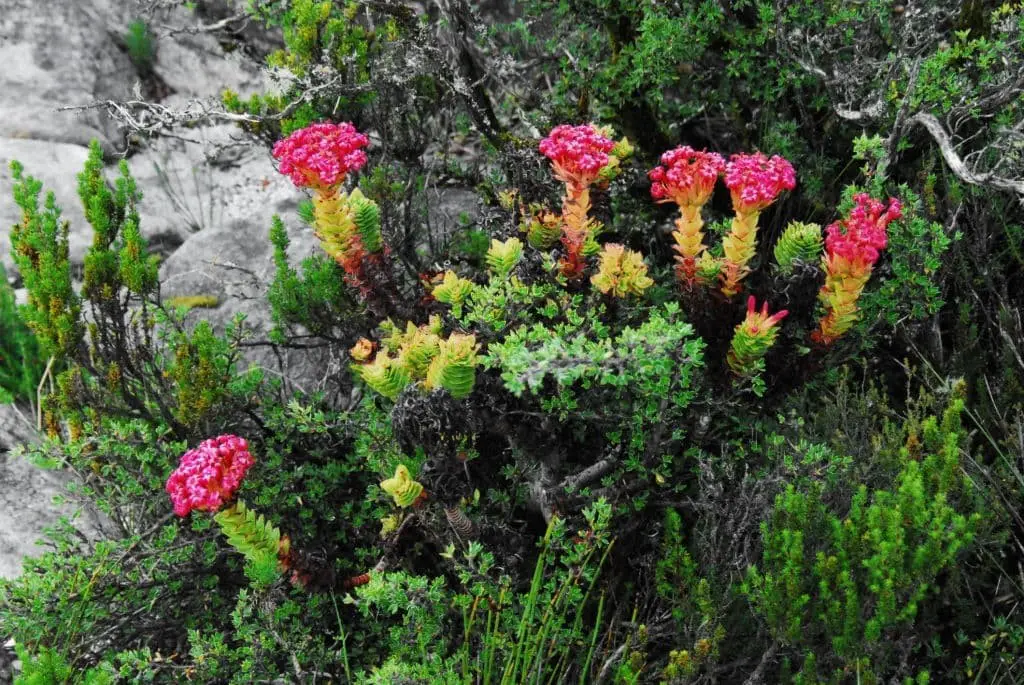
The Red Jade, a unique variant of the jade plant, sets itself apart from others through its striking deep red hue. Its distinctive characteristic lies not only in its vibrant color but also in the shape of its leaves, which are triangular and nearly conical in form. Moreover, this variety of jade plant is known to produce white flowers during the summer months, adding an extra layer of visual appeal.
Crassula Cultrata (Blush Plakkie)
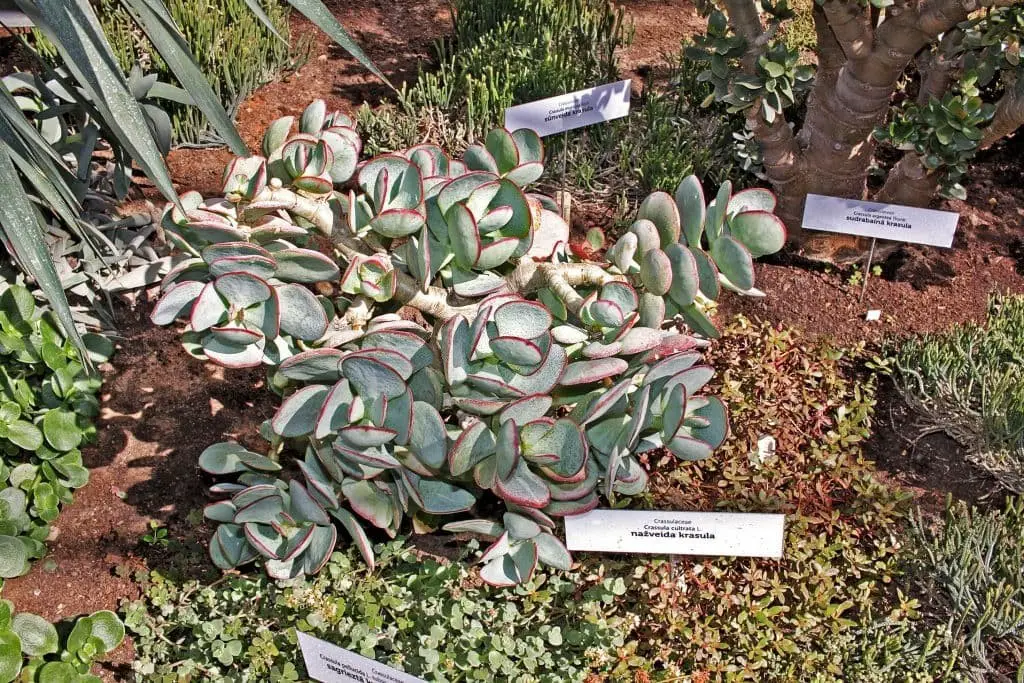
The ‘Sharp-leaved Crassula’ type of Jade plant is characterized by its striking features. Its stems stand out with a vibrant red hue, while its leaves are an elongated, tear-shaped light green. A subtle reddish-brown tinge can be observed along the edges of this plant’s foliage. When it blooms, it produces bright yellow flowers that add to its visual appeal.
Crassula exilis ssp. picturata (Tiger Jade)

The Tiger jade, also known as the small-sized SucculentBox shop featured option, boasts striking green leaves adorned with white speckles. This low-maintenance plant thrives indoors, where it can bask in moderate temperatures and enjoy good drainage without demanding excessive sunlight. Occasional watering is sufficient for this adaptable succulent, which excels in hot regions with limited water sources.
A notable feature of the Tiger jade is its production of pale pink flowers, adding a touch of elegance to any indoor space.
Crassula Falcata
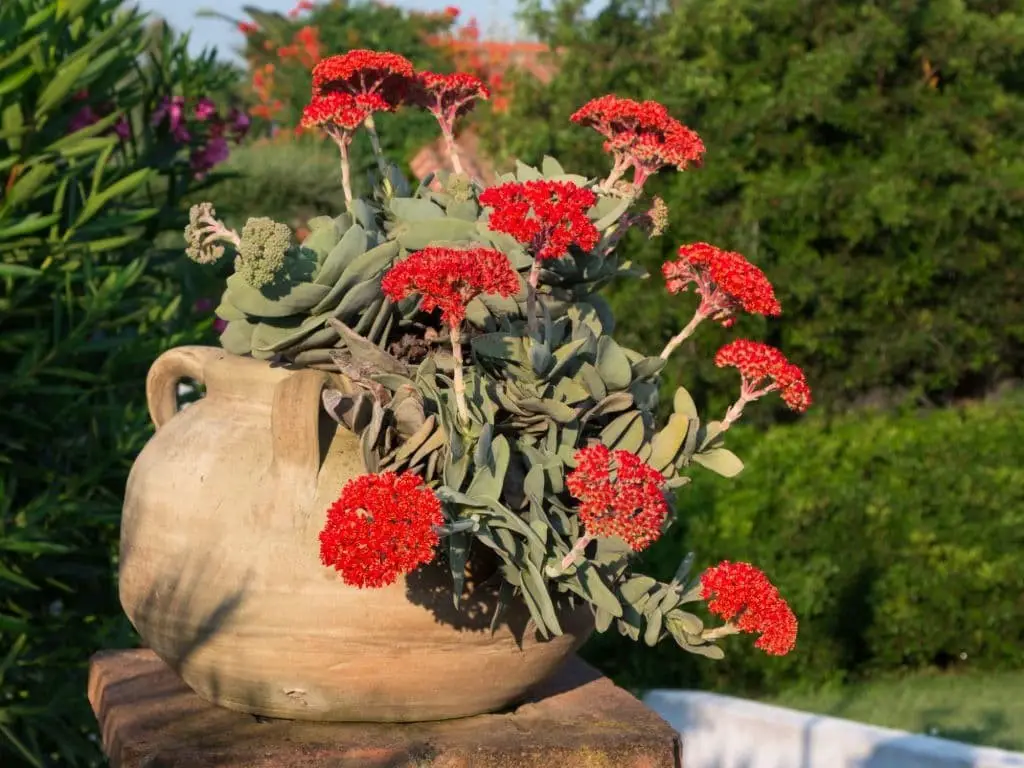
The Jade Plant’s Propeller-Like Beauty: A Unique Specimen This particular variety of jade plant earns its nickname ‘propeller plant’ due to the distinctive twisted foliage that forms opposite pairs, giving rise to a propeller-like appearance. The leaves themselves are characterized by their gray-green hue and overlapping shape. While this type of jade plant doesn’t always produce flowers, when it does, striking red blooms emerge at the center of each ‘propeller’.
In contrast to other varieties, this one thrives in bright light conditions, making it an ideal choice for indoor spaces where temperatures are moderate. Its adaptability and unique appearance make it a popular addition to many homes.
Crassula Jade Tower
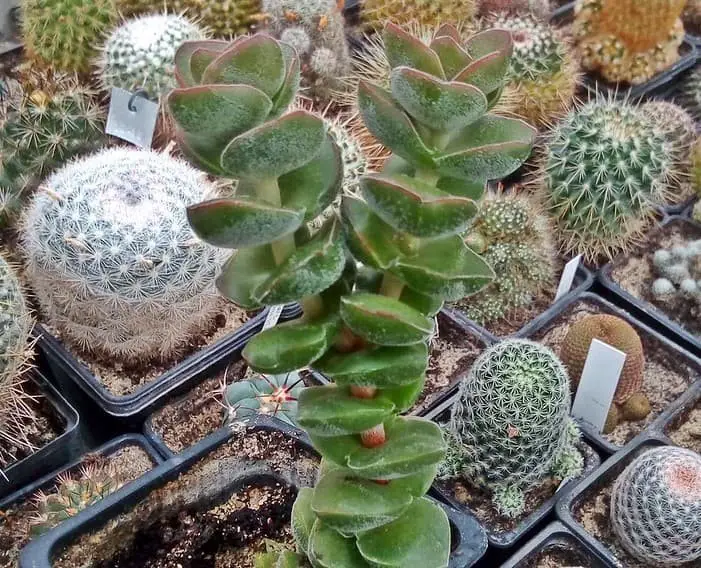
The Jade plant is characterized by its distinctive erect leaves that grow in columns, showcasing a unique combination of green and white features. The leaves themselves appear ‘frosted’ due to the presence of tiny white papillae, while their overall hue is a lovely shade of green. As for its floral display, the Jade plant produces small but exquisite pink flowers that truly come alive during its blooming season, making it an even more captivating sight.
Crassula Marnieriana (Jade Necklace)
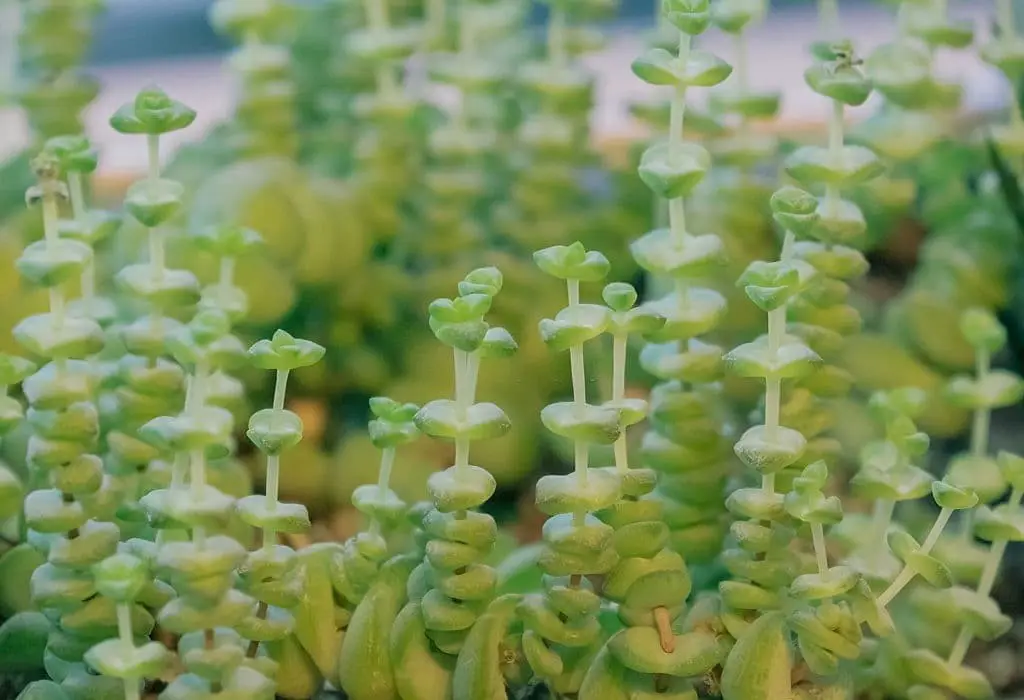
The Jade Plant’s unique charm is reminiscent of silver springtime blooms, with delicate, triangular-shaped leaves that cascade down its stem. The plant’s name aptly describes its distinctive ‘necklace-like’ appearance, as white flowers bloom along the stems during the winter months, adding a touch of serenity to any setting.
Crassula Ovata (Money Plant)
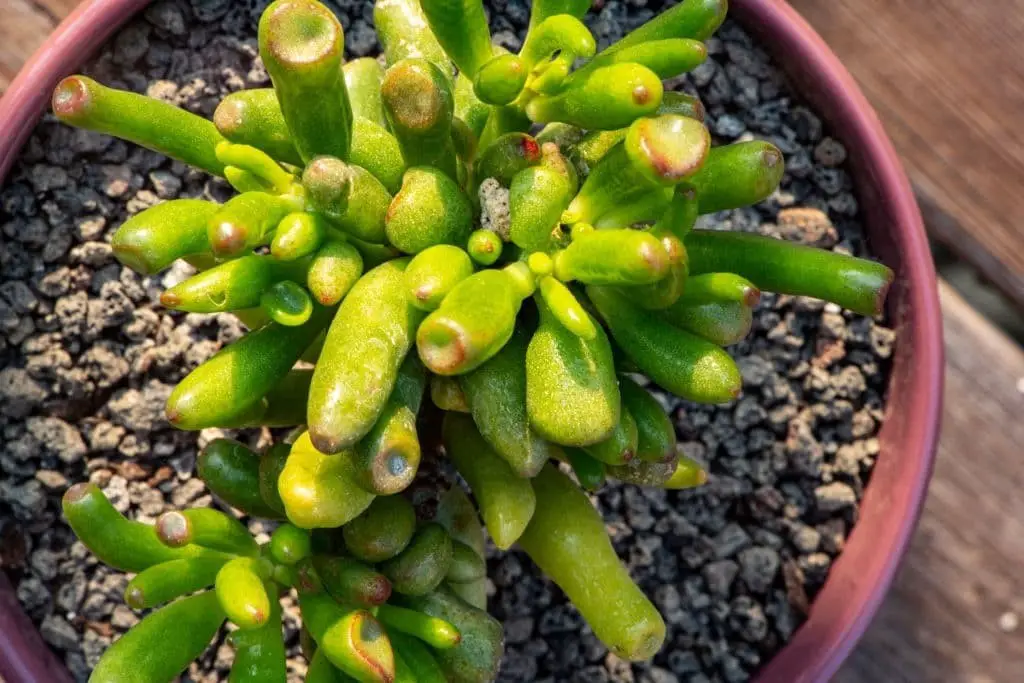
The most widely recognized jade plant is often referred to as a ‘money plant’ or ‘money tree,’ largely due to its ability to evoke a tree-like appearance. Characterized by its lush, emerald-green leaves shaped like tears and star-shaped white flowers that bloom during the winter months, this variety is commonly kept indoors where it thrives in bright, indirect light.
In feng shui practices, this plant is believed to bring good fortune, making it an ideal choice for placement in areas where prosperity is desired, such as a home’s or office’s ‘money corner.’
Crassula Ovata Botany Bay (Lucky Jade)
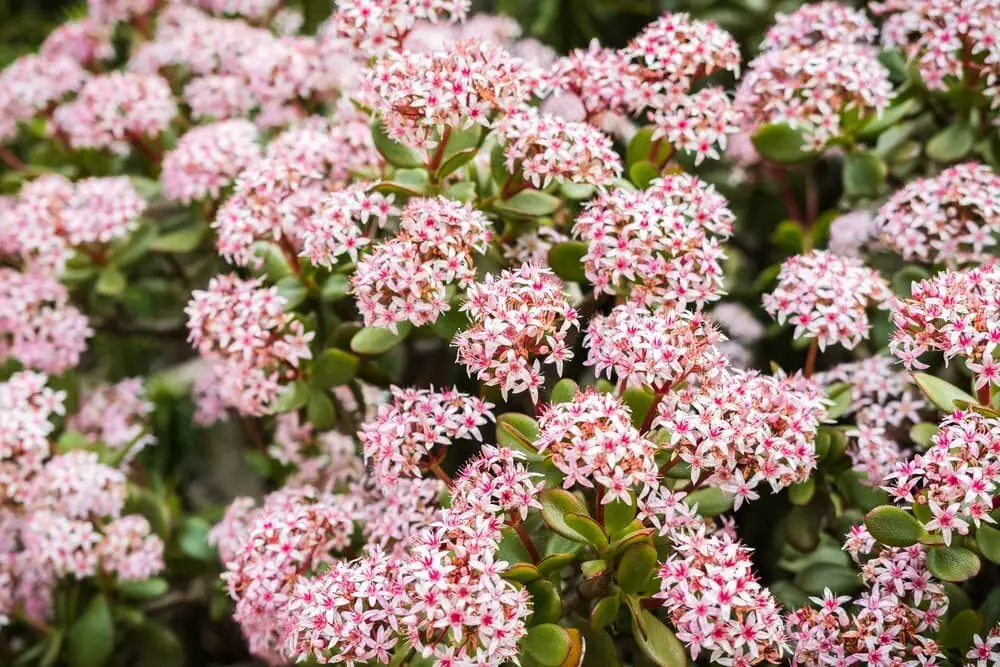
The Coin-Shaped Jade Plant, often sought after for its symbolic association with prosperity and good fortune, is distinguished by the distinctive shape of its leaves. This variety is characterized as a slow-growing shrub rather than a rapid-growing plant. One of its most striking features is the combination of light jade-green foliage and vibrant red margins, which sets it apart from other types.
Crassula Ovata Crosby Compact (Dwarf Jade Plant)
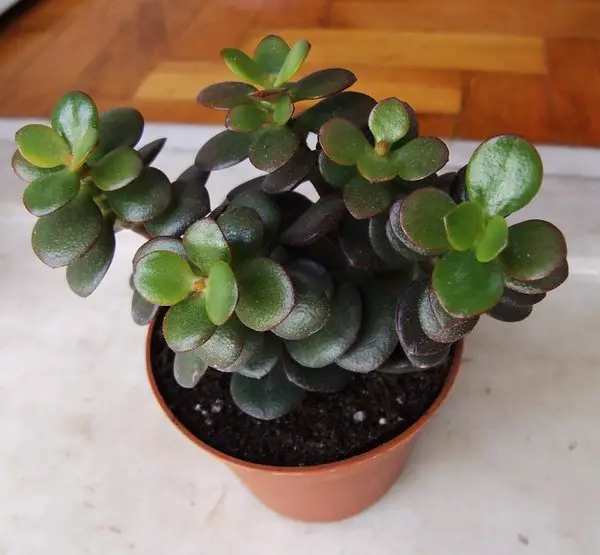
This diminutive jade plant boasts delicate light green branches and distinctive tear-shaped leaves. Measuring a mere 2.5 centimeters at most, it’s one of the smallest varieties, yet its visual appeal remains unmatched. As new leaves emerge, they are often tinged with a vibrant red hue, further enhancing its ornamental value.
Crassula Ovata Gollum (Gollum Jade)
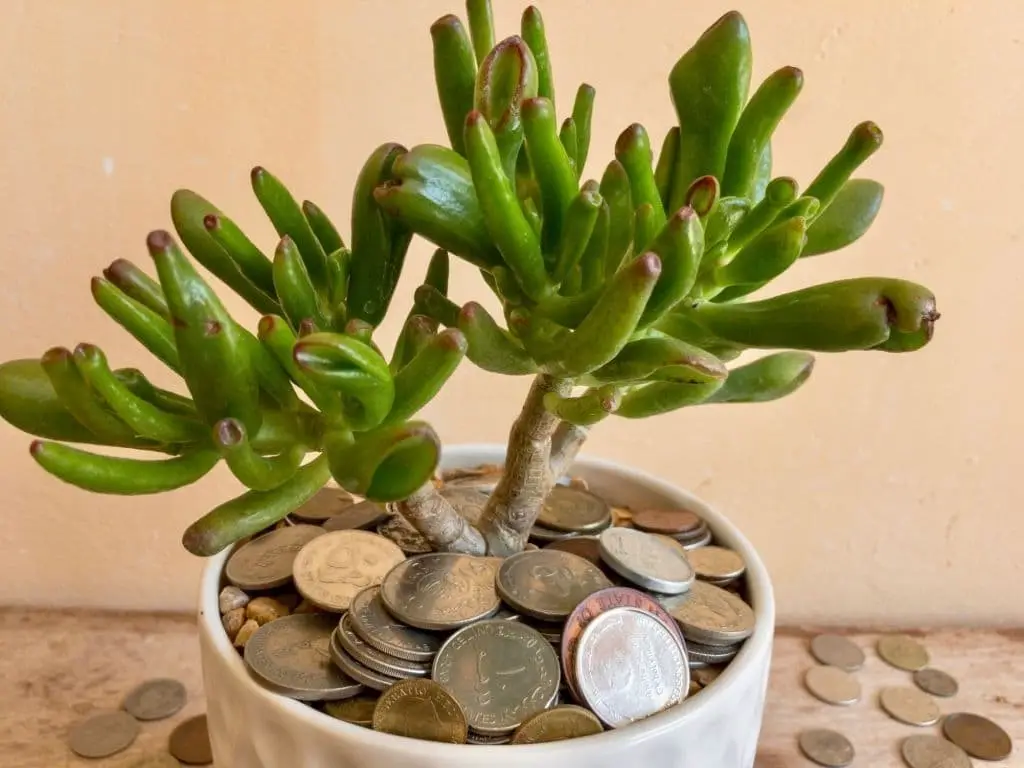
The ‘Finger jade,’ ‘Hobbit’s pipe jade,’ or simply ‘Trumpet jade’ – this succulent plant has a plethora of names, but its distinctive brown branches adorned with succulent leaves growing near the top remain a defining characteristic. One notable variety is the brightly colored Trumpet Jade, boasting a vibrant yellow and green hue with subtle red undertones. For bonsai enthusiasts, this type is particularly well-suited for creating a stunning jade bonsai tree.
Crassula ovata Gollum Variegata (Variegated Gollum Jade)
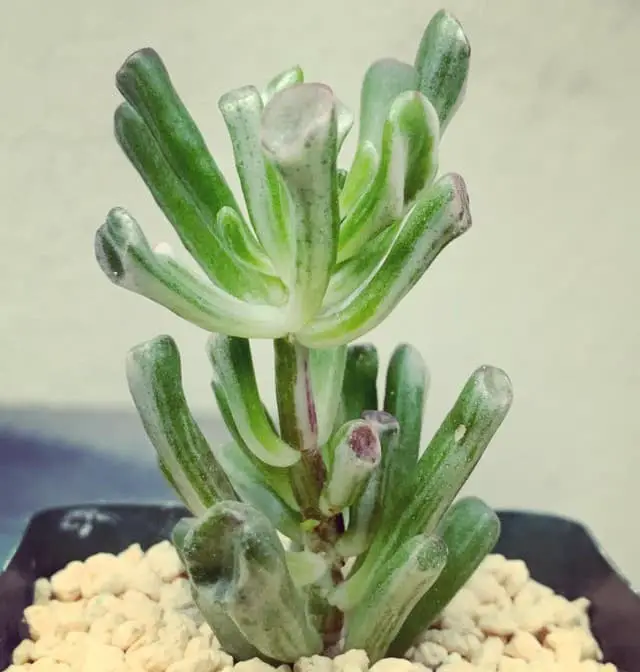
The Begonia x hybrida is a standout for its stunning combination of colors, featuring green, white, pink, and more hues. As a seaside garden favorite, it tends to flourish during winter and autumn seasons. One notable characteristic of this plant is that its foliage undergoes a striking color transformation when exposed to cold temperatures.
Crassula Ovata ‘Harbour Lights’ (Harbour Lights Jade)
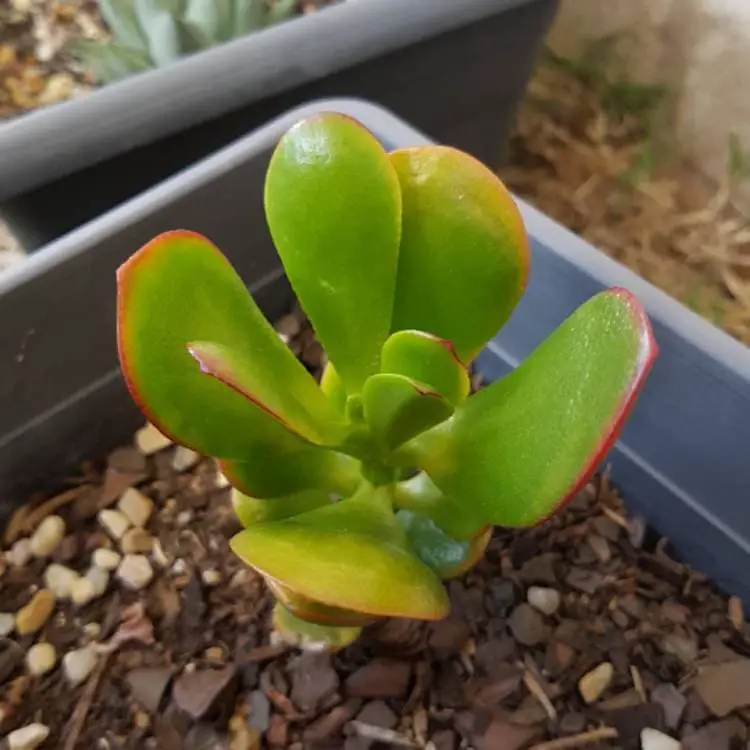
The Botany Bay Jade Plant is often confused with this type due to their striking similarities in stem, leaf, and color profiles. One key distinguishing feature, however, lies in the vibrant, star-shaped flowers that bloom in a distinctively pink hue, setting them apart from their close relative.
Crassula Ovata Hobbit (Hobbit Jade)
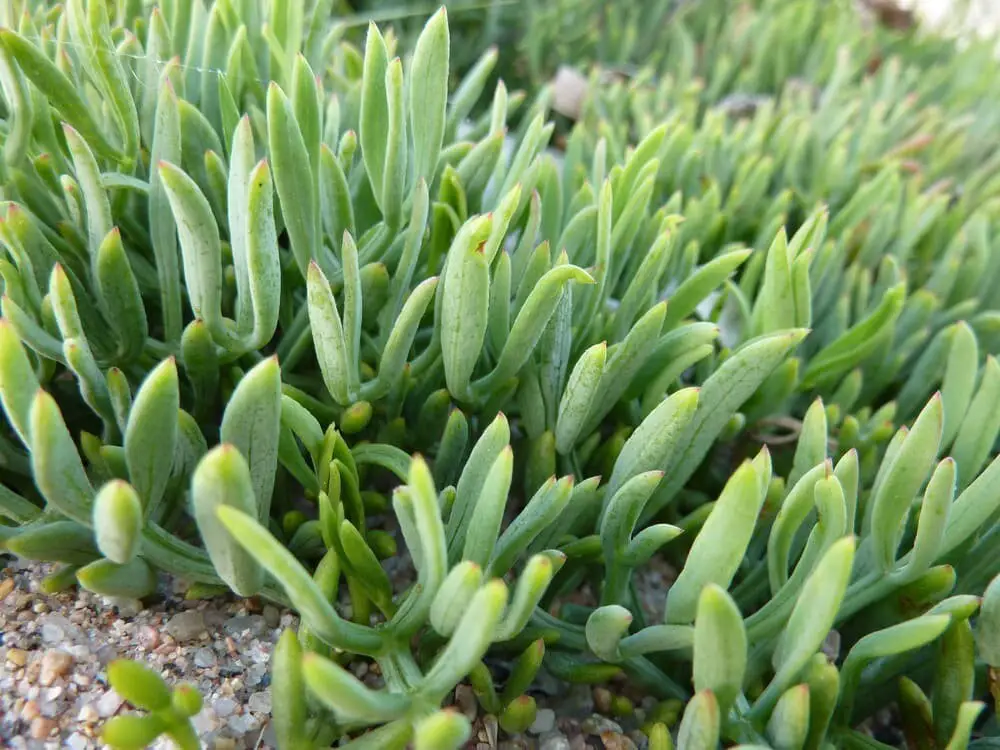
A unique characteristic of the Hobbit Jade, also referred to as a lucky tree, is its adaptability for bonsai cultivation. One of its most striking features are the green leaves with distinctive red edges, which grow in a tubular shape. According to legend, the extent of trimming this plant receives is directly correlated with the amount of fortune and happiness it brings, adding an element of whimsy to its care.
Crassula Ovata Hummel’s Sunset (Golden Jade Tree)
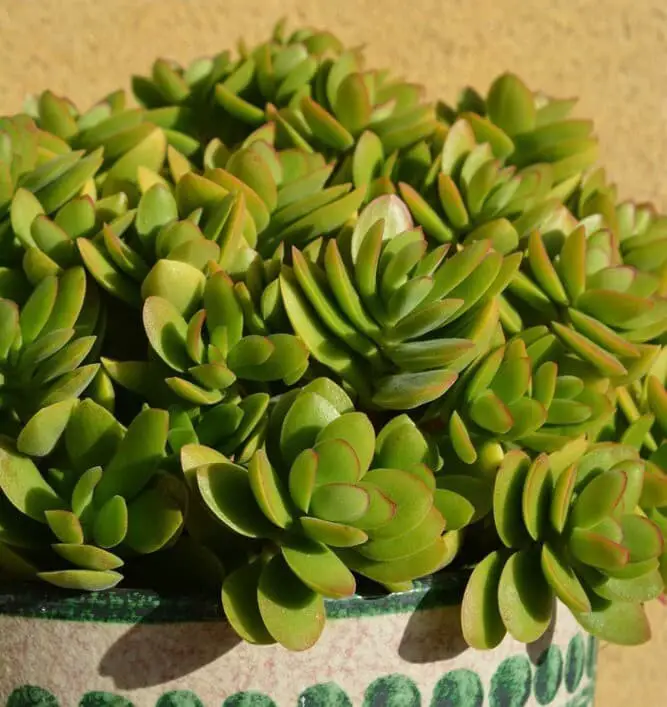
The Plectranthus × forsteri ‘Marguerite’ is a stunning, award-winning plant that boasts striking golden yellow and green foliage. Its defining features include robust woody stems and branches, as well as intricately shaped leaves with a unique combination of lime green, yellow, and red hues along their edges. During the colder months, these vibrant colors truly come alive, creating a breathtaking display.
As temperatures rise during the summer or warmer seasons, however, the leaf color shifts to a warm mustard tone, showcasing the plant’s remarkable adaptability.
Crassula Ovata ‘Lemon & Lime’ (Variegated Jade)
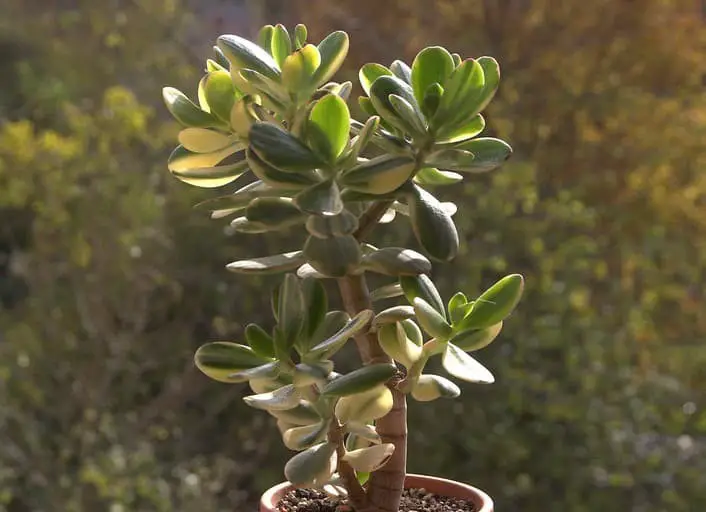
The jade plant’s defining characteristic is its striking foliage, featuring elongated oval leaves adorned with vibrant lime green and yellow stripes. Measuring up to 5cm in length, these leaves often develop red edges when exposed to ample light. When matured, the jade plant can reach a height of up to 4ft, allowing for pruning and training into a compact shrub shape.
Crassula Ovata Little Jade Tree
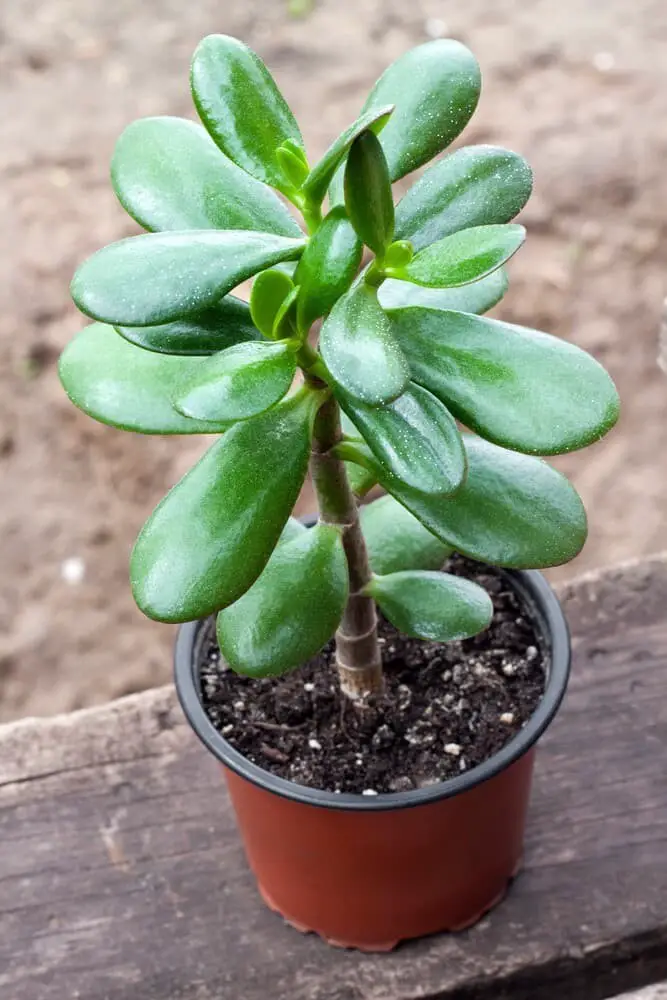
The Little Jade tree, also known as this type of jade plant, is a relatively recent hybrid, having made its debut only in 2015 at the Glenfield Wholesale Nursery. Its popularity stems from its widespread use as souvenirs or indoor plants, often showcased in small dish gardens, making it a sought-after choice for many.
Crassula Ovata Minima (Miniature Jade Plant)

The Jade Plant’s compact cousin, Peperomia obtusifolia, stands at a modest 3 feet tall, its unique selling point being the tiny, pointed leaves that showcase a striking combination of green and red hues. Unlike its fellow jade plants, this variety boasts a more sprawling, tree-like appearance, courtesy of its loose-foliated growth habit.
While it may not promise good fortune to those who bring one into their homes, Peperomia obtusifolia is sure to elevate the aesthetic appeal of any room or space with its understated elegance.
Crassula Ovata Pink Beauty (Pink Jade)
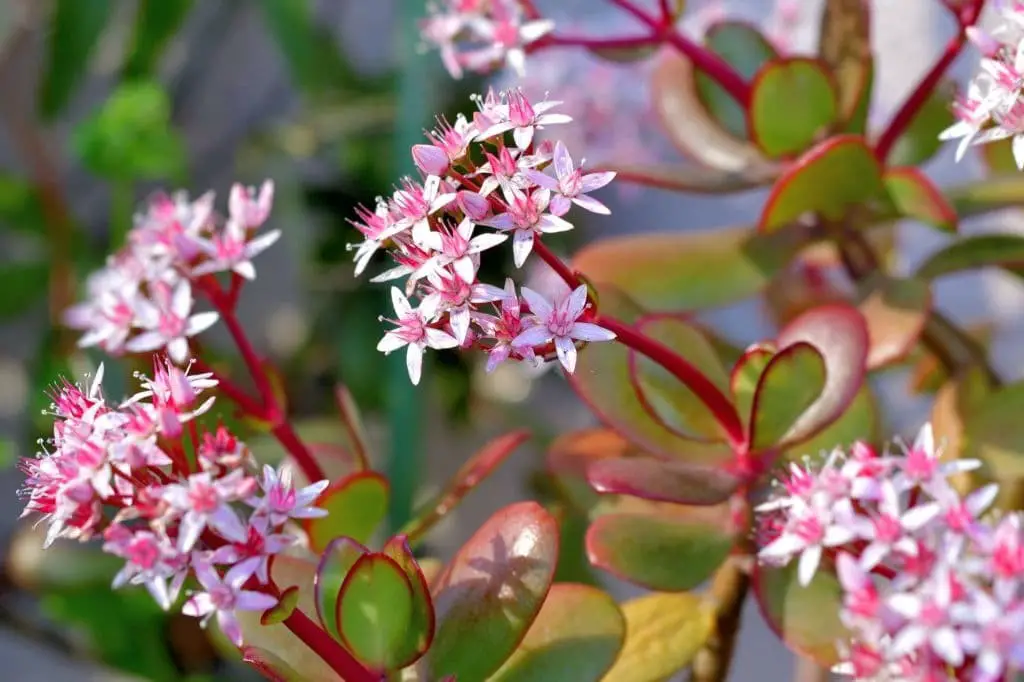
The Pink Beauty Jade plant stands out due to its vibrant pink hues, which not only adorn the leaves but also infuse the stems with a rosy tint, making it easily distinguishable from other varieties. Reaching heights of up to 1.5 meters, this tall and statuesque succulent boasts star-shaped flowers that retain their pink pigmentation, filling the air with a pleasant fragrance that can’t help but lift your spirits during the winter months.
Crassula Ovata Pixie
This compact jade plant thrives as a houseplant, showcasing a unique trait: its leaves develop a striking red rim when the environment is dry. Its adaptability to container life allows it to flourish in pots. As an added bonus, delicate white and pink flowers bloom above the foliage, adding visual interest. One of the defining characteristics of this type of jade plant is its ability to adjust its height based on the size of the pot used.
To keep it happy, provide bright lighting and consistent watering.
Crassula Ovata Ripple Jade
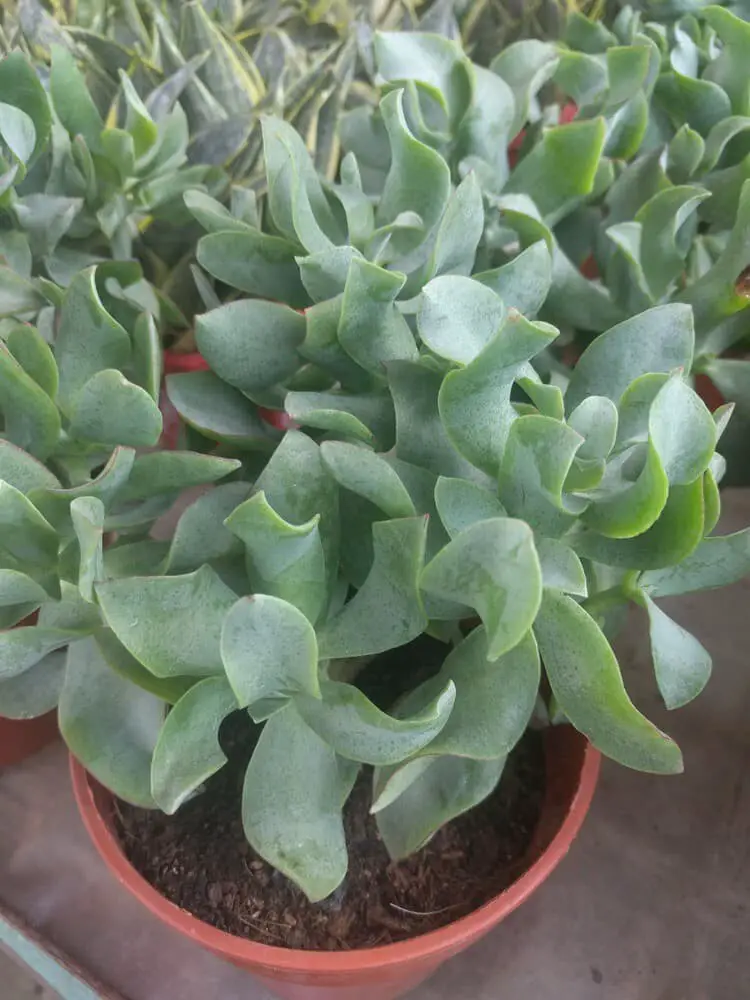
The Curly Jade Plant, also known as Jade Plant, boasts unique, twisted leaves with a predominantly green hue that’s subtly infused with faded blue undertones. The leaf edges, however, take on a striking purplish to dark brown coloration, creating an intriguing contrast. Notably drought-tolerant, this plant thrives when subjected to regular pruning, which also encourages healthy growth.
Crassula Ovata Ruby
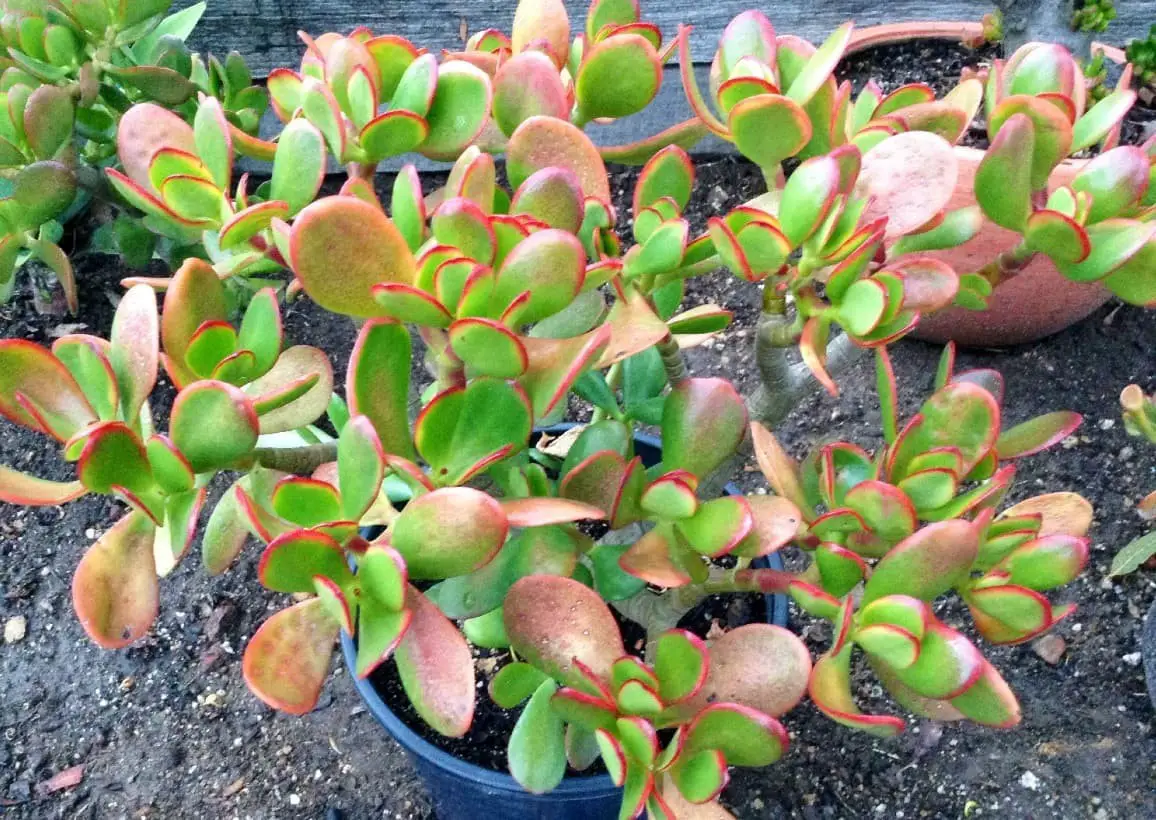
Characterized by its striking ruby-red and blush-toned foliage, this jade plant variety boasts an added layer of visual interest through the appearance of small, delicate flowers in shades of white and pink. Its compact growth habit allows it to reach a manageable height of approximately one meter, making it well-suited for coastal gardens where strong winds or salt-laden air may be prevalent. To maintain its desired shape and promote healthy growth, regular trimming is essential.
Crassula Ovata Sienna
The Jade Plant’s most distinctive feature is its delicate flowers, which burst forth with tiny white and pink blooms above the foliage. Its height is influenced by the size of its container and pruning, making it a versatile option for indoor spaces. This adaptable plant is perfect for tabletops, window sills, and other compact areas, earning it a spot as a thoughtful gift or souvenir that can thrive in small pots.
Crassula Ovata ‘Skinny Fingers‘
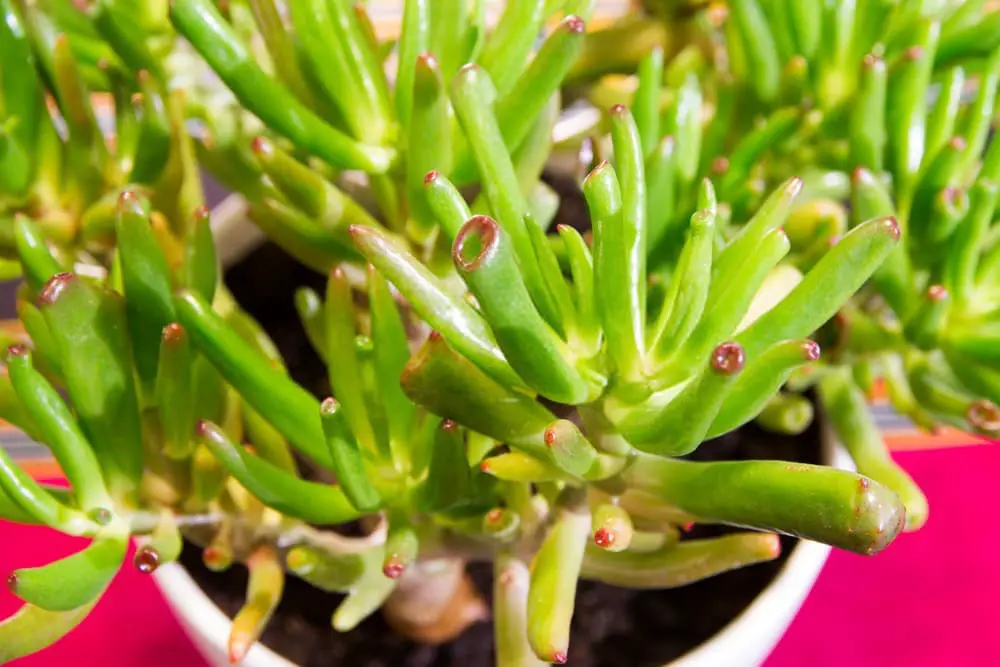
The ‘Finger-like’ Jade Plant stands out with its slender, succulent leaves reminiscent of thin fingers. Measuring up to 5cm in length, these leaves boast a striking jade hue, punctuated by reddish tips that add visual interest. As one of the smaller varieties of Jade Plants, this type boasts a charming diminutive nature. When fortunate, small star-shaped flowers may emerge, adorned with delicate shades of white and pink, adding an extra layer of charm to its already captivating appearance.
Its aesthetic profile draws similarities with other popular Jade Plant varieties, such as the ‘Gollum’ and ‘Hobbit’ types, making it a unique addition to any plant collection.
Crassula Ovata Undulata (Wave Jade)
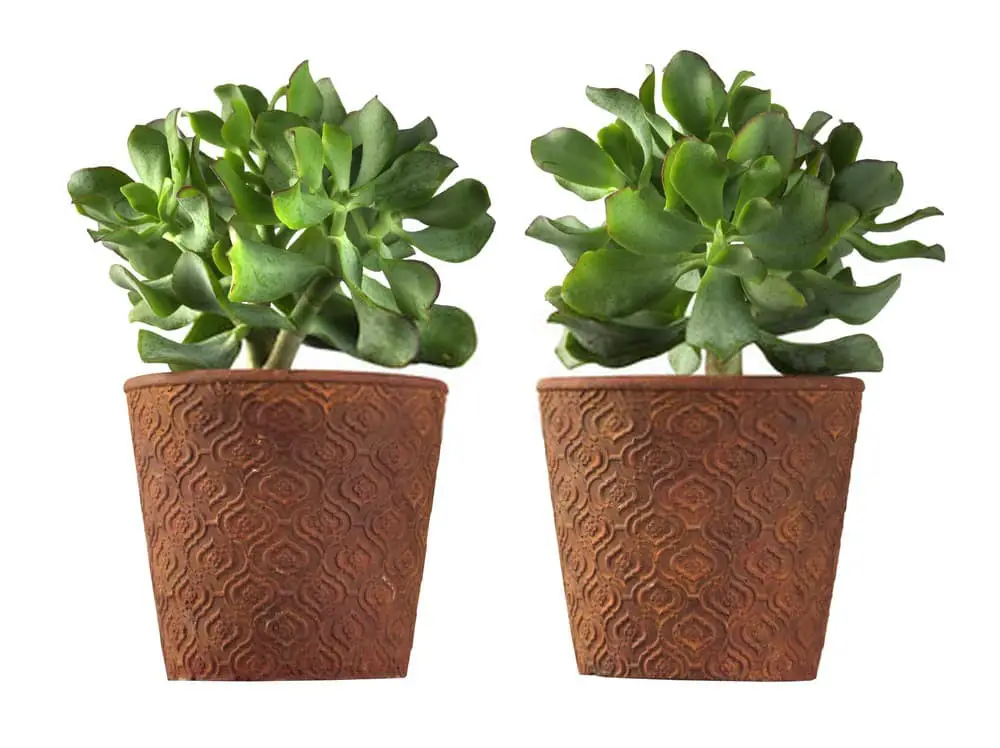
The Wave Jade, a variant of the Jade plant, boasts an unmistakable feature – its wavy, blue-green leaves adorned with striking red margins. Interestingly, these vibrant colorations are more pronounced when the plant is kept in cooler temperatures.
Crassula ovata Undulata
The Jade plant variety boasts vibrant green foliage with delicate red edgings, which is typically left unpruned. Simply remove any wilted or dying leaves to maintain its health. Beyond that, these plants tend to flourish in areas receiving ample sunlight and soil that drains well.
Crassula Perforata (String of Buttons)
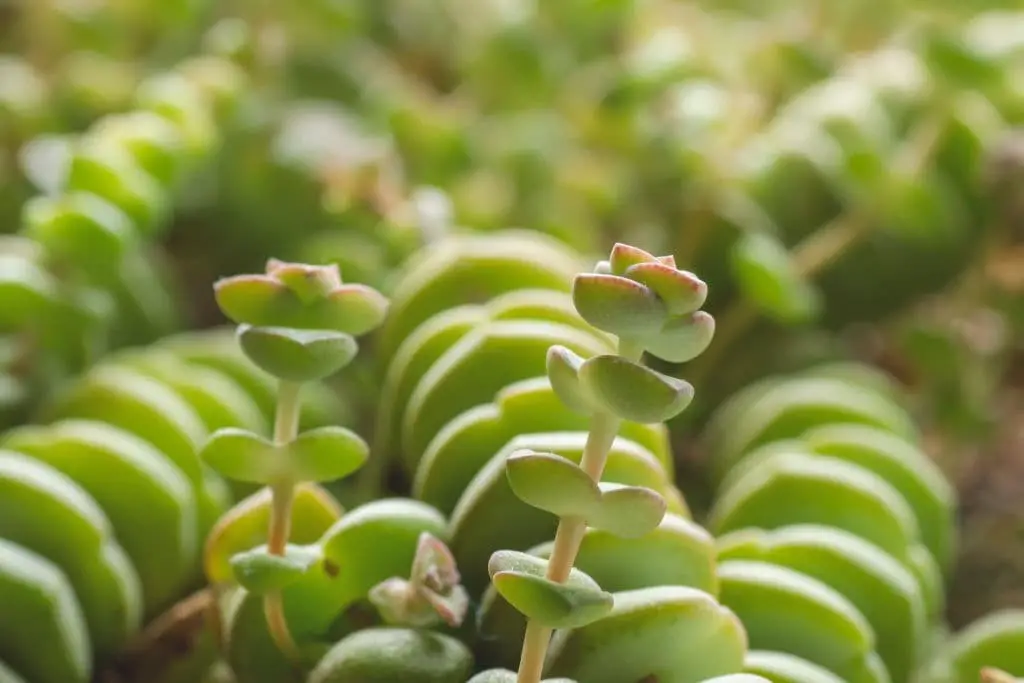
The String of Buttons, a type of jade plant, thrives indoors and is recognized by its unique triangular leaves that grow opposite each other around the stem. When exposed to light, these leaves may develop a pinkish hue on their sides. As an added bonus, this succulent produces bright yellow flowers during the spring season.
Crassula Picturata Tiger Jade
For those who take pride in their gardening skills, this particular Jade plant is an excellent choice. Its compact growth habit and stunning pagoda-like foliage make it a standout in any garden. The leaves themselves are a vibrant green hue with a subtle purple undertone, while fine hairs add texture to the overall appearance. What truly sets this type apart, however, is its ability to convey its emotional state through visual cues.
When happy, it produces beautiful flowers that add a pop of color to the surroundings. Conversely, when stressed, the leaves take on a reddish tint, as if protesting the conditions. This unique characteristic makes it an engaging and rewarding plant to cultivate.
Crassula Pubescens Bear Paw
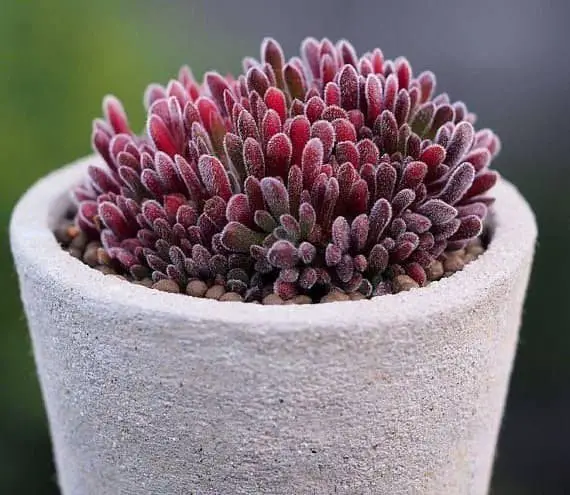
The Jade Plant variety in question is characterized by its compact growth habit and leaves that undergo a striking transformation under the sun’s rays. Initially green, these leaves deepen to a rich burgundy hue. Measuring up to 104 inches at their longest point, they are remarkably thin despite their impressive length.
As a slow-growing shrub, this type is often employed as a groundcover in gardens or used elsewhere where its compact nature is an asset.
Additionally, it produces bright yellow flowers that add a pop of color to the surrounding environment. Like other Jade Plant varieties, it requires a bright location but one that provides protection from direct sunlight.
Crassula pubescens ssp. rattrayi (Bear Paw Jade)
Jade Plants are known for their diverse varieties, and one such example is the Bear Paw Jade or Red Carpet. This particular type exhibits an intriguing adaptation – its leaves transform from green to a vibrant red hue when exposed to sufficient light. The leaves themselves can grow up to 4 centimeters in length and 2 centimeters in width, making them a striking feature of this plant.
In the winter months, it produces clusters of small, round white flowers that emerge at the tips of its foliage, adding an extra layer of visual interest.
Crassula Sarmentosa Comet (Variegated Trailing Jade)
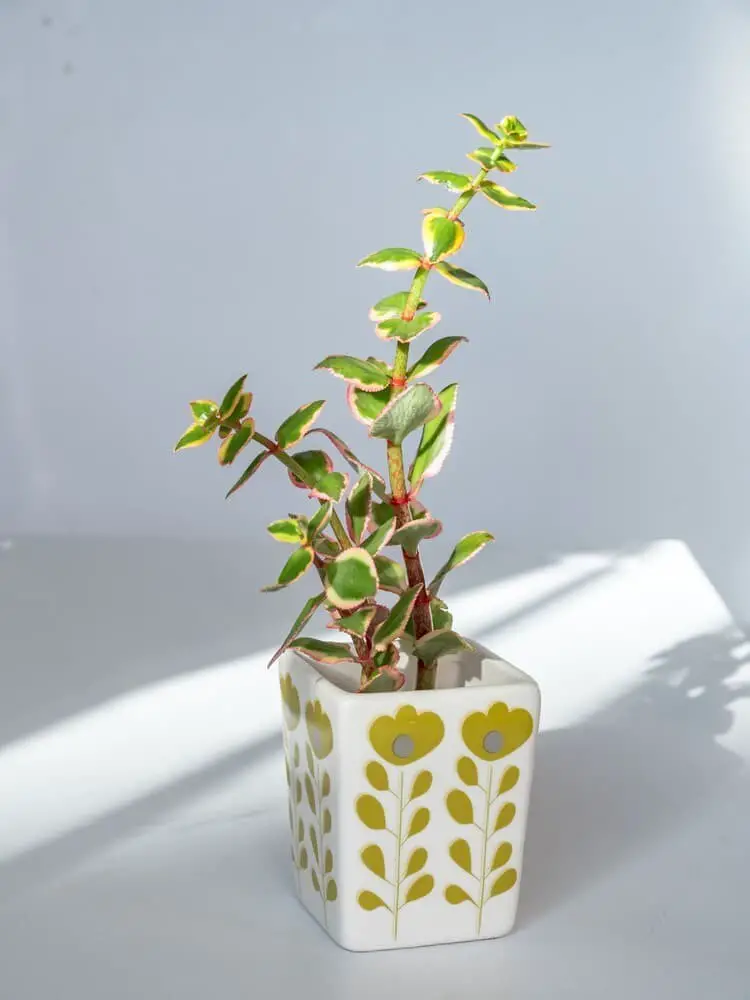
The Variegated Trailing Jade boasts the most striking foliage among all types of Jade Plants. Its distinctive feature is its trailing stems that cascade down with red highlights. When placed in a sunny spot, the leaves transform from deep green to a vibrant shade with thin reddish margins. This variety also produces small white flowers as a bonus. However, it’s worth noting that this plant comes with longer stems, which can be a challenge if you plan to keep it indoors.
Regular pruning is essential to maintain its beauty and prevent overgrowth.
Crassula Sericea ‘Hottentotta’
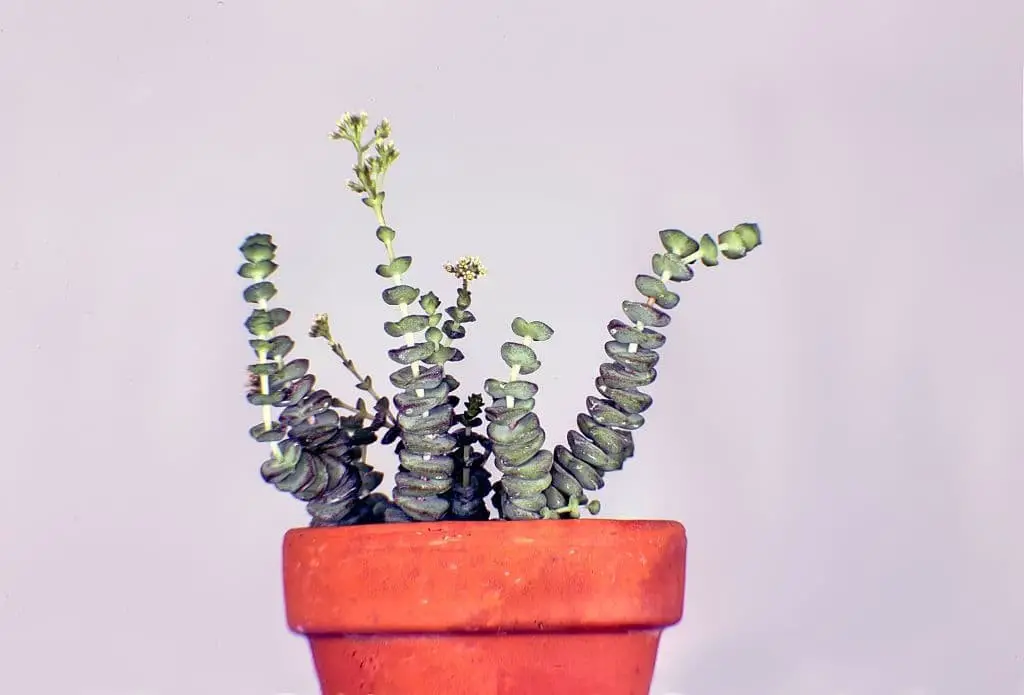
One of the unique dwarf varieties of Jade Plants, this type boasts rounded, velvety leaves that hug its slender stems, which grow in columnar fashion. Reaching no more than 15cm in height, it’s a compact and charming addition to any space. When the time is right, it produces a cluster of tiny flowers on a lengthy flowerhead, adding a touch of whimsy to its already-endearing nature.
Crassula Silver Springtime
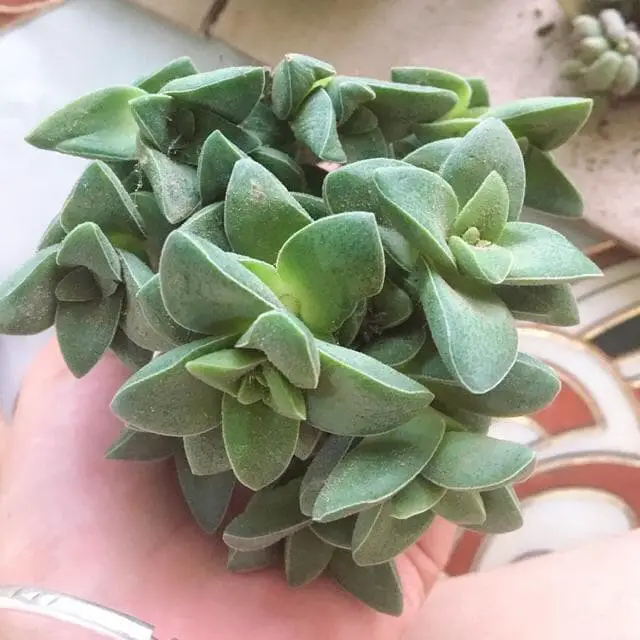
The ‘Compacta’ variant of the Jade plant boasts a diminutive stature, characterized by slender stems bearing a compact cluster of silvery-green foliage. Due to its lack of tolerance for direct sunlight, this variety thrives in indoor environments.
Crassula Tomentosa (Wooly Crassula)
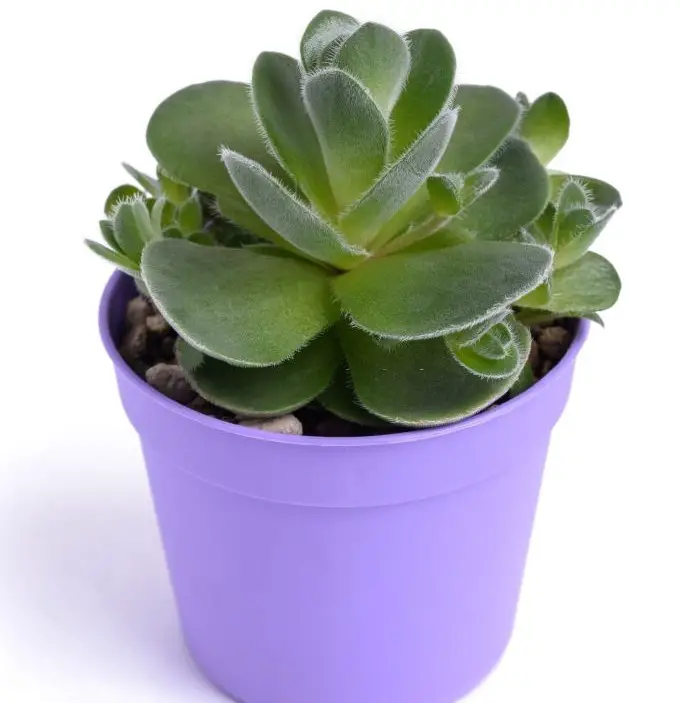
Characterized by its unique leaf morphology, the Jade plant’s rose-shaped foliage is a notable feature. The predominantly green hue of the leaves is subtly nuanced with reddish undertones, giving rise to a striking visual appeal. The Wooly Crassula’s moniker stems from the fine hairs that cover its leaves, imparting a soft, velvety texture. As the plant reaches maturity and flowers bloom, it can grow up to 2 feet in height or more, making it an impressive addition to any indoor space.
Portulacaria Afra
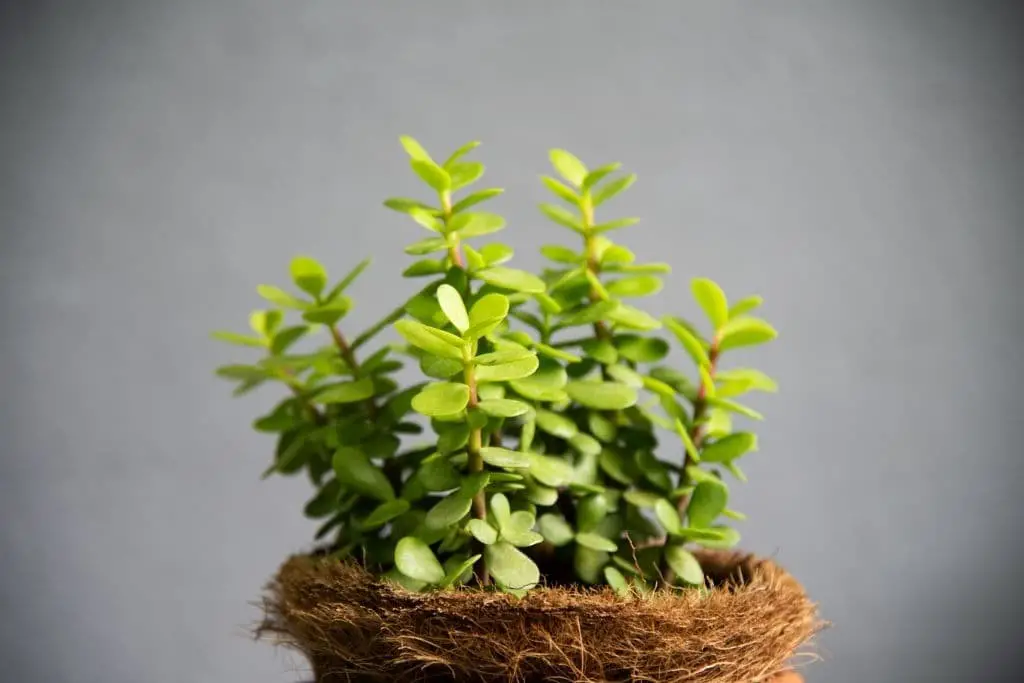
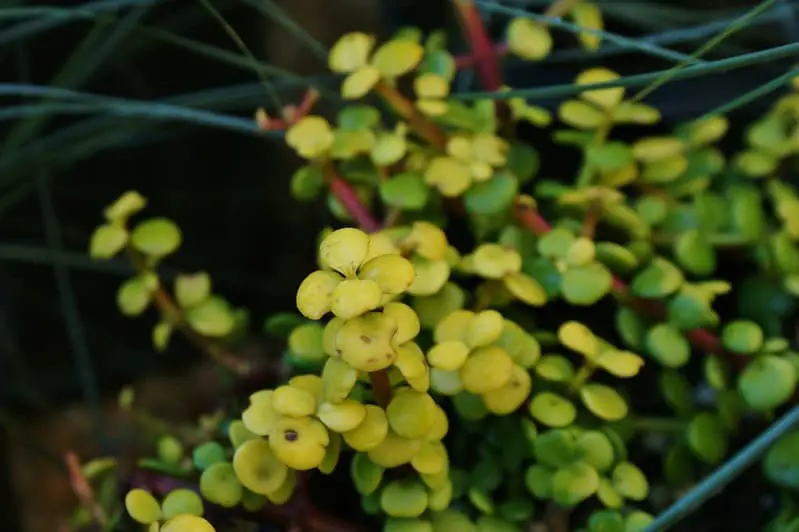
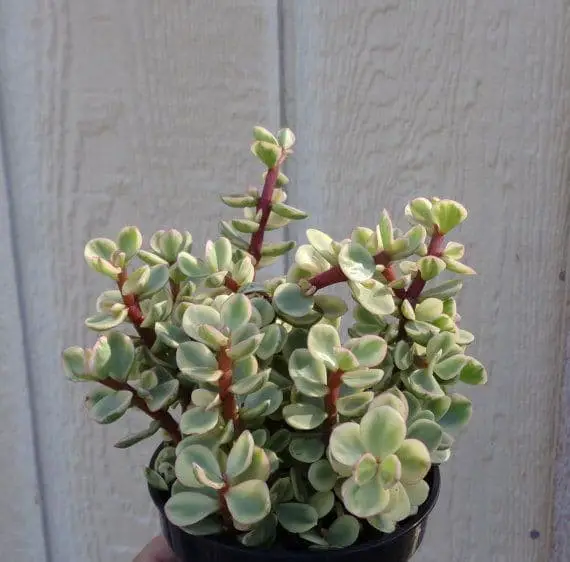
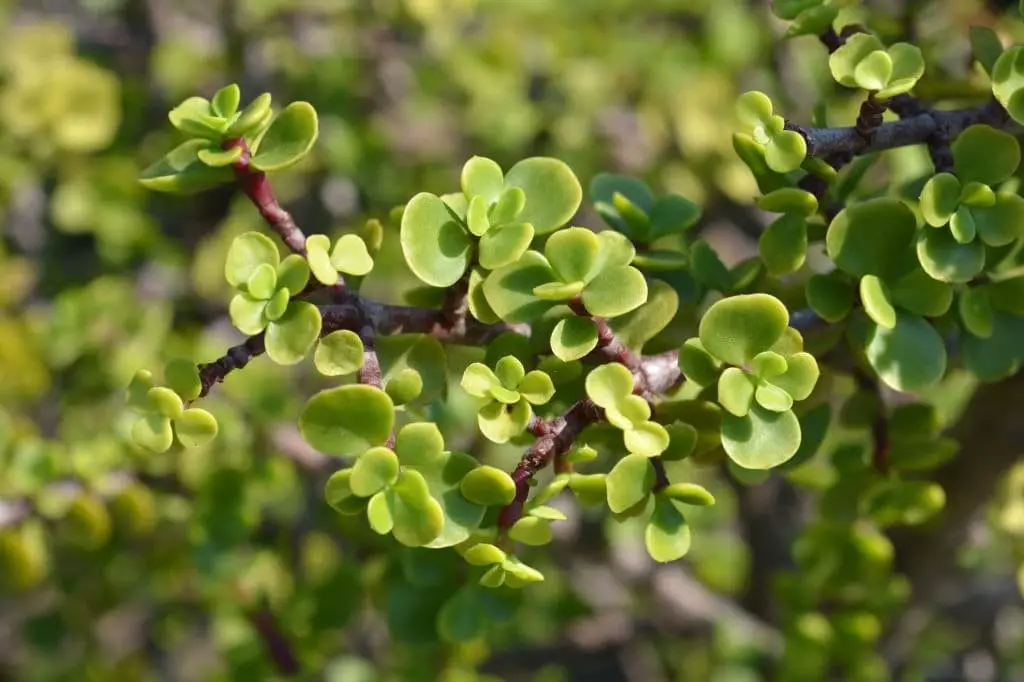
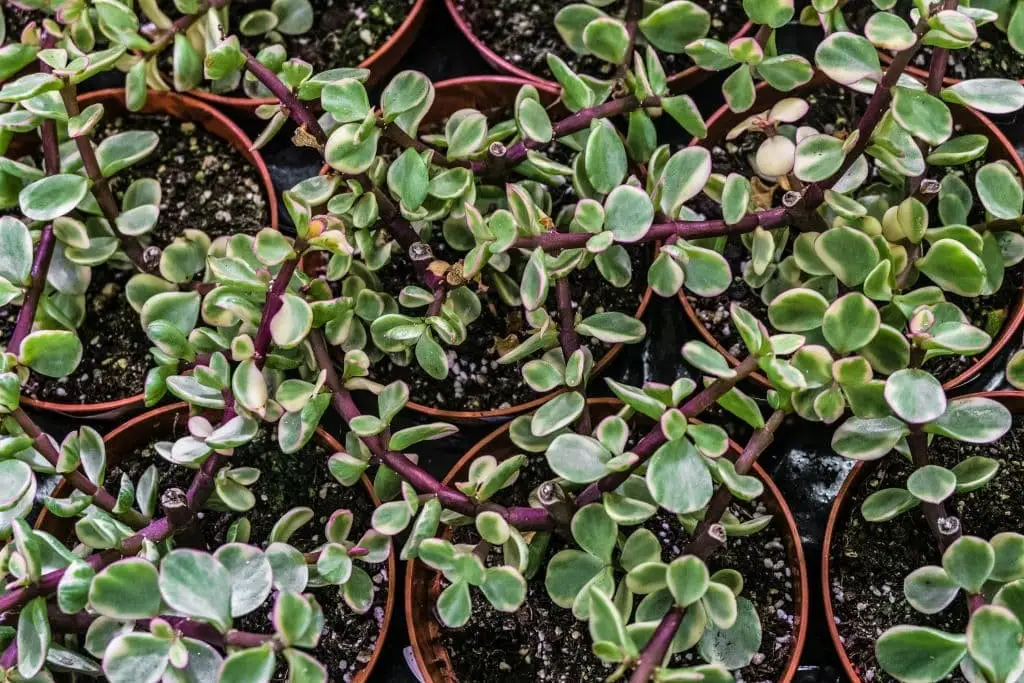
The Chinese Jade Plant, also known as Pork Bush, is an attractive houseplant due to its decorative nature. It grows up to 2 meters tall and can be controlled through regular pruning. While it thrives in drought conditions, it never produces flowers. Portulacaria Afra Aurea, or Yellow Rainbow Bush, is another type of Jade Plant. Its unique feature is the changing coloration as it grows, depending on the time of year.
This plant requires water, fertilizer, and can tolerate both shade and direct sunlight. Unlike some Jade Plants, it rarely produces the whitish pink characteristic. The Portulacaria Afra Cascade, or Low Elephant Bush, has rounded leaves that grow from its stems. It’s one of the types that doesn’t produce flowers and only grows up to 1 meter tall. The Portulacaria Afra Large Leaf, also known as the Green Penny Jade, is identified by its fleshy leaves on dark red stems.
This plant can grow up to 2 meters long but can be controlled through regular trimming. It’s an ideal houseplant due to its decorative nature and versatility. The Portulacaria Afra Porkbush, or Dwarf Jade, has woody red stems and small, round, glossy green leaves. Its unique feature is that it grows widely after reaching its maximum height, making regular trimming highly recommended.
Lastly, the Portulacaria Afra Variegata, or Rainbow Bush, can be identified by its creamy leaves with light green center stripes and a shade of magenta towards its edges. Like other Jade Plants, it doesn’t produce flowers and grows up to 1 meter tall.
Senecio jacobsenii (Weeping Jade)
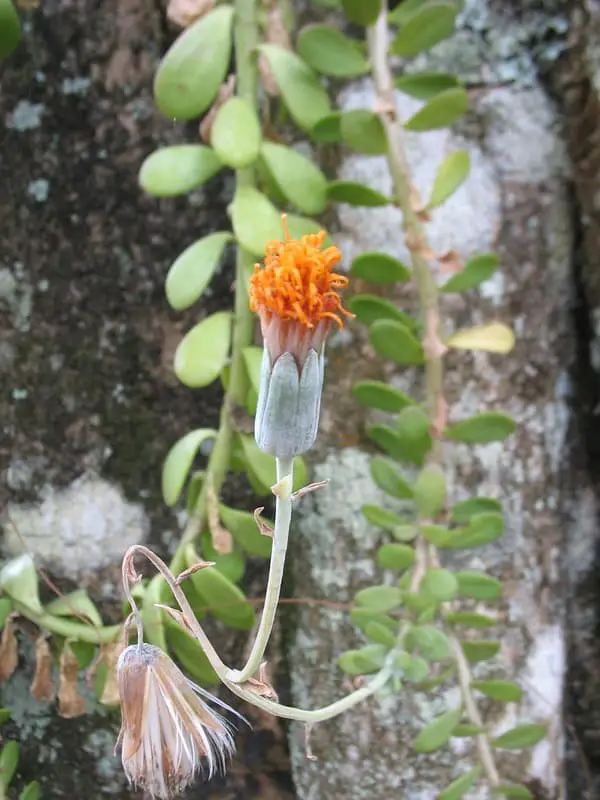
The Jade plant known as Kleonia Petraea is distinguished by its hairy flowers and robust growth habits. Its stems are thick and sturdy, while its flat, egg-shaped leaves reach lengths of approximately 3 inches. As it continues to grow, this type of Jade plant develops a sprawling habit, forming a network of roots that can spread out along the ground.
For gardeners, this variety is particularly appealing due to its vibrant orange flowers, which add a splash of color to an otherwise dull landscape.
Sinocrassula yunnanensis (Chinese Jade)

The Jade Plant’s unique characteristic is its half-rounded leaves, a distinct feature that sets it apart from other species. Interestingly, this type of plant exhibits monocarpic behavior, meaning it will only produce flowers once and then die off. However, the close relatives that surround it ensure its legacy lives on. When the plant blooms, the rosettes can grow up to 4 inches in diameter, a noticeable transformation.
The small white flowers produced by this type of Jade Plant are a delightful sight. With these characteristics, it’s no wonder why succulent enthusiasts continue to appreciate and care for this remarkable species.
How to Care for Jade Plants
Jade plants are often regarded as low-maintenance, but they still require some attention to thrive. As one of the most popular houseplants, it’s essential to understand how to care for them properly. Here are a few key tips to help you keep your jade plant happy and healthy.
Firstly, only water your jade plant when the soil is dry to the touch. This will prevent overwatering and ensure that the roots have enough oxygen to function correctly.
A good rule of thumb is to wait until the top inch or so of the soil has dried out before giving it a drink.
Another crucial aspect of jade plant care is providing the right amount of sunlight. While they do need some direct light, too much can scorch the leaves and cause them to become discolored. A spot with bright, indirect light for 6-10 hours a day is ideal.
Regular pruning is also essential to keep your jade plant looking its best.
Prune it when needed, rather than just because you want to, as this will help maintain the shape and structure of the plant. It’s also important not to prune too much, as this can cause stress and potentially harm the plant.
Finally, make sure you’re potting your jade plant in a container that provides enough room for its roots to breathe. A compact container may not be the best choice, as jade plants need space to grow.
FAQs
Which type of jade plant is lucky?
The Crassula Ovata, commonly referred to as the money tree or lucky plant, is arguably the most coveted jade plant variety due to its perceived ability to attract fortune and good luck. This phenomenon has led to its widespread adoption in various forms of lucky charms, such as amulets and jewelry. According to popular belief, receiving a Crassula Ovata from someone can amplify its supposed good fortune-bringing properties.
Why is my jade plant so leggy?
Jade plants require adequate sunlight to thrive, and a lack of it can cause stems to become leggy. This condition not only affects the plant’s appearance but also increases its susceptibility to leaf rot. To prevent this issue, ensure your jade plant receives filtered sunlight for at least six hours each day. This simple adjustment can make a significant difference in maintaining the overall health and beauty of your plant.
Are coffee grounds good for jade plants?
Jade plants are often enriched by the addition of coffee, which is said to enhance their ornamental value. The alleged benefits of coffee extend beyond its effects on human skin, where antioxidants help combat signs of aging. In the case of jade plants, a similar process may occur, as the coffee seems to thicken stems, resulting in lush, full foliage and vibrant colors.
Additionally, used coffee grounds can prevent leaf drop, making them an attractive option for plant enthusiasts seeking to maintain their jade plants’ aesthetic appeal.
Do jade plants give oxygen at night?
As night falls, jade plants become incredibly efficient at purifying the air. By absorbing carbon dioxide and releasing oxygen, they subtly yet significantly enhance the air quality in their surroundings. This impressive ability to filter out impurities has earned them a spot as a top choice for indoor spaces, including bedrooms, living rooms, bathrooms, and offices. Their remarkable air-cleaning properties make them an excellent addition to any room where clean air is crucial.
Conclusion
Jade plants are multifaceted wonders, offering both aesthetic appeal and practical benefits. In addition to being visually stunning, they’re also incredibly low-maintenance indoor plants, making them an ideal choice for those who don’t have a green thumb. Moreover, these plants possess the remarkable ability to purify the air, which can significantly impact our quality of sleep and overall well-being.
However, it’s essential to note that jade plants do require specific conditions to thrive, namely the right amount of sunlight and water. With proper care, they’re surprisingly resilient and can adapt to a variety of environments.
Related Posts
To embark on a career as a plant breeder, follow this step-by-step guide. Start by acquiring a solid foundation in botany and horticulture through formal education or extensive self-study. Next, gain hands-on experience by interning at a botanical garden, nursery, or research institution. This will provide valuable insight into the breeding process and help you develop essential skills like plant propagation, classification, and selection.
As you progress, focus on developing your expertise in specific areas, such as flower color, shape, and size. Network with other professionals in the field to stay abreast of the latest techniques and research. Finally, consider pursuing a graduate degree or certification to further solidify your position in the industry.


